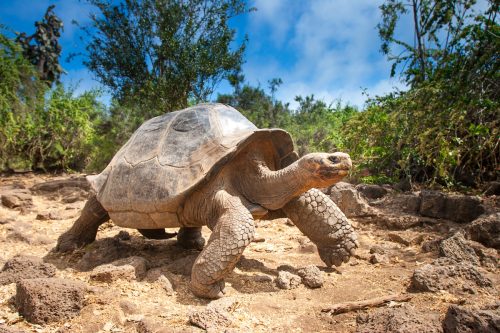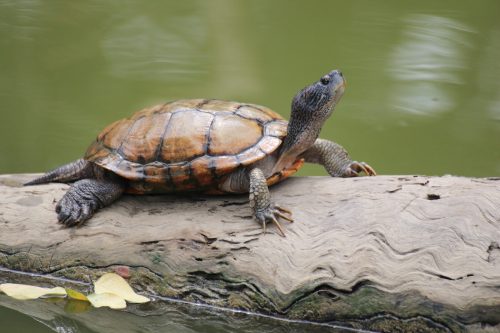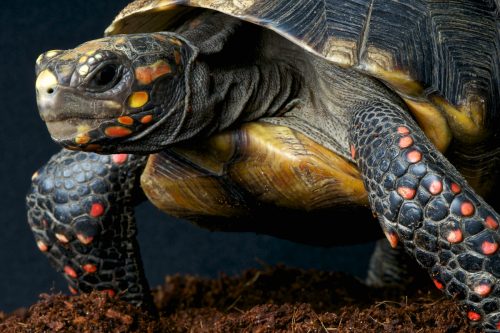Yes, Turtles Can Make Sounds, and This is What They Sound Like
“Wouldn’t stop chatting."

Turtles have a few trademarks: namely, their shells, their slowness, and their silence. They’re not known for being one of the most vocal members of the animal kingdom—or vocal at all. But scientists have discovered that turtles do make noises to communicate. And they have it on tape. A new paper published this month in the journal Nature Communications looked at 53 species considered “non-vocal,” including turtles, tuatara reptiles, caecilians, and lungfish.
Researchers found that they were able to produce a number of varied sounds to express themselves. Some of the turtles studied made “many different types of sounds” while others “wouldn’t stop chatting,” said Gabriel Jorgewich-Cohen, lead researcher and a Ph.D. student at Zurich University. Read on to find out more. Keep reading to learn more and see the video.

Researchers found that the animals studied were able to produce a range of clicks, croaks, crackles, chirps, purrs, and grunts. Audio recordings captured a number of turtle species making quiet noises. For example, The red-footed tortoise can produce a low noise halfway between a croak and a bark.
“The idea was to focus on animals that are commonly, historically considered to be non-vocal,” Jorgewich-Cohen told the UK Times. “I wanted to go deep on reporting these animals that are not known to vocalize, and try to understand this.”

What sound do turtles make? “There’s a lot of clicking, some of them sound like a purring cat, some like a creaking door,” said Jorgewich-Cohen. “The caecilian sounded like a frog mixed with a burp. The snapping turtle sounds like Darth Vader.” Jorgewich-Cohen recorded 53 species for 24 hours apiece.
He believes the noises turtles made were used to communicate, although the science is far from conclusive. “They’ve documented more things making sounds than people had appreciated previously,” John Wiens, a professor of evolutionary biology at the University of Arizona, told CNN. “That’s the first step.”

The study isn’t just cute: It may ultimately shake up one of the fundamental tenets of biology. “The main hypothesis was that the sounds made by frogs and birds and mammals all came from different evolutionary origins,” Jorgewich-Cohen told CNN. But Jorgewich-Cohen’s research suggests that the ability to produce sounds “comes from one single origin,” he said. Accordin g to the study, vocal communication must be as old as the last common ancestor of vertebrates with lungs, about 407 million years.

This isn’t the first study to suggest that turtles can communicate. In 2014, a study found that Giant South American river turtles used vocal sounds to “talk” to each other, including calling to their offspring. Jorgewich-Cohen used video to see if sounds turtles’ sounds had any correlation to their actions.
“Sea turtles will sing from within their egg to synchronize hatching,” he told the BBC. “If they call from inside, they all come out together and hopefully avoid being eaten.”

Next, Jorgewich-Cohen would like to determine what turtles are saying to each other, if they actually are communicating. “In most cases, we just know they’re making sounds. We don’t know what they mean,” he told CNN. “besides that, I would like to understand a bit about their cognition ability – how they think, more than actually what the sounds mean.”
Further research may also aid conservation efforts. “Turtles are the second most endangered group of vertebrates, behind primates,” he said. “When we think about their conservation, we never consider human noise as a source of problems, and I think maybe now we should start considering it, rethinking how we do conservation.”














